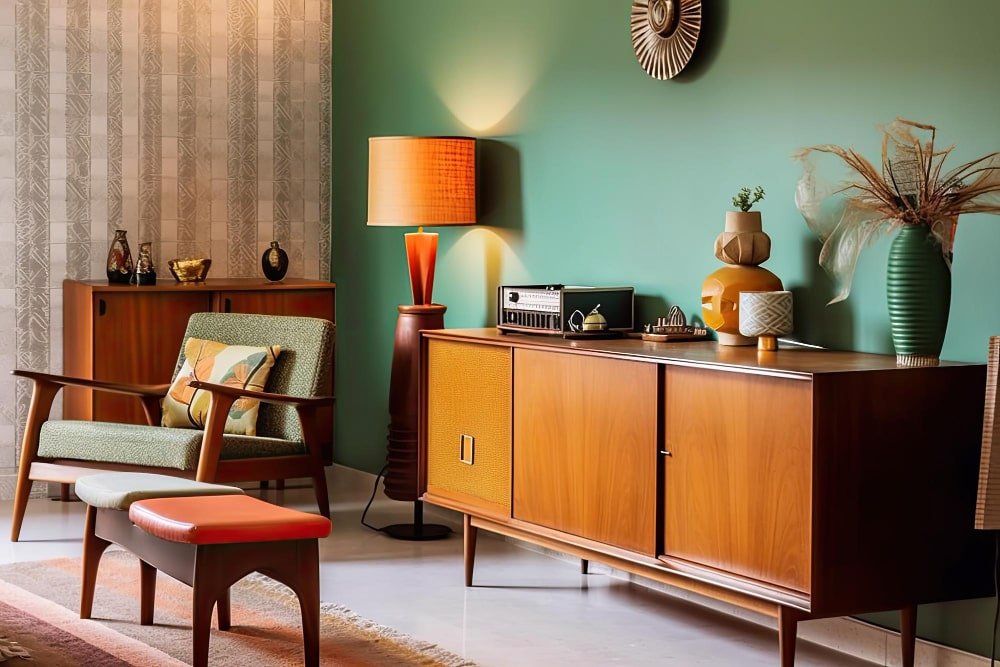The Timeless Appeal of Mid-Century Modern Design: Why It Still Works Today
Mid-century modern design is more than just a trend—it’s a design movement that has stood the test of time.
From its origins in the mid-20th century to its resurgence in contemporary interiors, this style continues to captivate homeowners, designers, and collectors alike.
But what makes mid-century modern design so enduring? In this blog post, we’ll explore the history, key characteristics, and reasons why this iconic style still feels fresh and relevant today.
Plus, we’ll share tips on how to incorporate mid-century modern pieces into your own home.
A Brief History of Mid-Century Modern Design
Mid-century modern design emerged in the mid-1930s and flourished through the 1960s, particularly in the United States and Europe.
It was a response to the rapid technological advancements and societal changes of the post-World War II era. Designers sought to create functional, affordable, and aesthetically pleasing furniture and homes for the growing middle class.
The movement was heavily influenced by the Bauhaus school in Germany, which emphasised the marriage of form and function.
Iconic designers like Charles and Ray Eames, Ludwig Mies van der Rohe, Eero Saarinen, and Arne Jacobsen pioneered the style, creating pieces that were both innovative and timeless.
Key Characteristics of Mid-Century Modern Design
Mid-century modern design is defined by several distinct features that make it instantly recognisable:
1. Clean Lines and Organic Shapes
Mid-century modern furniture is known for its sleek, minimalist lines and organic, geometric shapes. Think of the iconic Eames Lounge Chair or the Saarinen Tulip Table—these pieces are both functional and sculptural.
2. Functionality Meets Beauty
This design philosophy prioritises practicality without sacrificing aesthetics. Furniture pieces often serve multiple purposes, such as storage ottomans or modular shelving units.
3. Natural Materials
Mid-century modern design celebrates natural materials like wood, leather, and stone. Teak, walnut, and oak are commonly used, often with their natural grain exposed to highlight their beauty.
4. Bold Colours and Subtle Neutrals
While neutral tones like beige, grey, and white form the foundation of mid-century interiors, pops of bold colours like mustard yellow, olive green, and burnt orange are often used as accents.
5. Integration with Nature
Large windows, open floor plans, and indoor plants are hallmarks of mid-century modern homes, blurring the line between indoors and outdoors.
Why Mid-Century Modern Design Still Works Today
1. Timeless Aesthetic
The simplicity and elegance of mid-century modern design make it versatile enough to fit into a variety of interior styles. Whether your home is contemporary, bohemian, or traditional, a mid-century piece can add a touch of sophistication.
2. Focus on Quality and Craftsmanship
Mid-century modern furniture was built to last, with an emphasis on durable materials and expert craftsmanship. This focus on quality ensures that these pieces remain functional and beautiful for decades.
3. Sustainability
In an era where sustainability is increasingly important, mid-century modern design aligns perfectly with the ethos of reusing and repurposing. Vintage mid-century pieces are not only eco-friendly but also tell a story of history and craftsmanship.
4. Adaptability to Modern Lifestyles
The clean lines and multifunctional nature of mid-century furniture make it ideal for modern living spaces, especially in urban environments where space is at a premium.
5. Nostalgia and Emotional Connection
For many, mid-century modern design evokes a sense of nostalgia for a bygone era. It reminds us of a time when design was optimistic, forward-thinking, and deeply human-centred.
How to Incorporate Mid-Century Modern Design into Your Home
1. Start with a Statement Piece
A single iconic piece, like an Eames Lounge Chair or a Noguchi Coffee Table, can anchor a room and set the tone for the rest of your decor.
2. Mix and Match Eras
Don’t be afraid to blend mid-century modern pieces with contemporary or antique furniture. The contrast can create a dynamic and personalised space.
3. Use Colour Strategically
Incorporate bold, mid-century-inspired colours through accessories like throw pillows, rugs, or artwork. This allows you to experiment without overwhelming the space.
4. Embrace Natural Materials
Add warmth and texture to your home with wood furniture, leather upholstery, and stone accents. These materials are timeless and pair well with other styles.
5. Focus on Lighting
Mid-century modern lighting fixtures, such as Sputnik chandeliers or arc floor lamps, can serve as both functional and decorative elements.
Conclusion
Mid-century modern design is more than just a passing trend—it’s a timeless style that continues to inspire and delight.
Its clean lines, functional beauty, and emphasis on natural materials make it a perfect fit for modern homes.
Whether you’re a seasoned collector or new to the world of vintage furniture, incorporating mid-century modern pieces into your space can create a home that feels both stylish and inviting.
At Sourced Wonders, we’re passionate about helping you find the perfect mid-century modern treasures to elevate your home.
Explore our collection and discover the enduring charm of this iconic design movement.


